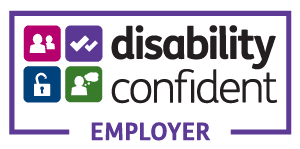The workforce management landscape is constantly evolving in all disciplines; in the healthcare industry in particular. Healthcare organizations must stay ahead of the curve to remain competitive in today's fast-paced business environment. From automation and artificial intelligence to remote work and flexible schedules, workforce management is undergoing a profound transformation. In this blog post, we will take a look at some of the trends and predictions that are shaping the future of workforce management.
1. Automation and Artificial Intelligence
Automation and artificial intelligence are revolutionizing the way Healthcare facilities and practices manage their workforce. Working with brands like locumbooking.com and Verovian Healthcare where chatbots and self-service portals are deployed to obtain predictive analytics and automated scheduling. This allows our partners to seamlessly manage all the healthcare professional resources available to them, manage agencies, bank staff, travel nurses and other healthcare professionals. AI is making it easier for healthcare companies to manage and optimize their workforce in real time. In the future, we can expect to see an even greater emphasis on automation and AI in the workforce management industry. The healthcare industry is one of the fastest-growing sectors in the world. This means that there will continue to be a strong demand for workers, which makes it even more important for companies to find ways to optimize their workforce. Partnership with the right recruitment agency will optimize your practice in attracting and retaining the best healthcare professionals to fit your practice culture and values.
We are a leading healthcare recruitment agency with over 10 years of experience in the industry. Our team of consultants specialize in providing a bespoke service that is tailored to your specific needs. We work closely with our clients to understand their culture and practice objectives so that we can find the best candidates for them.
2. Remote Work and Flexible Scheduling
Remote work has been on the rise for years, and the COVID-19 pandemic has accelerated this trend. With employees seeking greater flexibility and the ability to work from anywhere, companies are adapting by offering more flexible work arrangements and remote work options. General Practitioners (GPs), Nurses, Pharmacists (Independent prescribers), Social workers, and many healthcare professionals are working from home more than ever. In the future, we can expect to see an increase in remote work and flexible scheduling as a permanent fixture of the modern workforce. Remote working comes with its own technological demands. Healthcare facilities must ensure the right tools, security and communication methods are in place to support the new ways of working.
3. Employee Engagement and Wellness
Employee engagement and wellness are becoming increasingly important in the world of workforce management. Companies are recognizing the need to create a supportive and empowering work environment to attract and retain top talent. From wellness programs and employee recognition initiatives to flexible work arrangements and career development opportunities, companies are investing in their employees to improve engagement and overall satisfaction. The benefits of employee engagement and wellness include lower turnover rates, improved productivity, and reduced healthcare costs. The future of work will be an environment where employees feel valued, respected and supported. A recent Gallup poll found that only 30% of employees are engaged at work. A majority of workers (55%) are “not engaged” and 15% are “actively disengaged”. The results indicate that companies need to do more than just offer traditional benefits like health insurance and paid time off. Employees want opportunities for development, recognition, and support in order for them to feel valued and motivated by their jobs.
we can expect to see an increase in remote work and flexible scheduling as a permanent fixture of the modern workforce.
4. Data-Driven Decision Making
Data-driven decision-making is becoming increasingly important in workforce management. With the rise of big data and advanced analytics, healthcare facilities are using data to make informed decisions about their workforce. From predictive analytics to real-time reporting and metrics, companies are using data to optimize their workforce and make better business decisions with respect to staffing, scheduling, and recruitment. When it comes to workforce planning and management, the data needs to be accessible and actionable for facility leaders. This can be achieved by implementing tools that integrate data from multiple sources into a single platform.
Here are five ways that data-driven decision-making can help healthcare facilities optimize their workforce:
A. Staffing: Data-driven staffing allows healthcare facilities to make decisions based on concrete data rather than hunches or intuition. This allows facilities to optimize their staff levels, schedule shifts more efficiently and effectively, and reduce overtime expenses. This helps to manage contingency planning, bank staff, locum bookings and healthcare professional workforce hiring and planning.
B. Scheduling: It allows facilities to accurately predict patient volume and staffing needs, which helps them optimize their staff levels and reduce overtime expenses.
C. Recruitment: Data-driven recruitment enables facilities to attract, train, recruit and retain employees who will be most likely to succeed in their roles. This reduces attrition rates within the team, and optimizes staffing level at healthcare practices. In turn, reduces overtime and excessive contingency staffing.
D. Training: Data-driven training allows facilities to identify gaps in employee skill sets and create personalized learning plans that address those deficiencies. This may be soft skills including improving communication skills with patients, or certification to address growing concerns. Data-driven training improves the efficacy and professionalism of the entire healthcare team.
E. Talent Management: Data-driven talent management allows facilities to identify high-performing employees, understand what makes them successful, and replicate their success throughout the organization. This helps them optimize their workforce and reduce overtime expenses.
Conclusion
The future of workforce management is rapidly changing and evolving. From automation and artificial intelligence to remote work and flexible scheduling, companies must stay ahead of the curve to remain competitive in today's fast-paced business environment. By embracing these trends and predictions, companies can create a supportive and empowering work environment that attracts and retains top talent, while driving business success.




